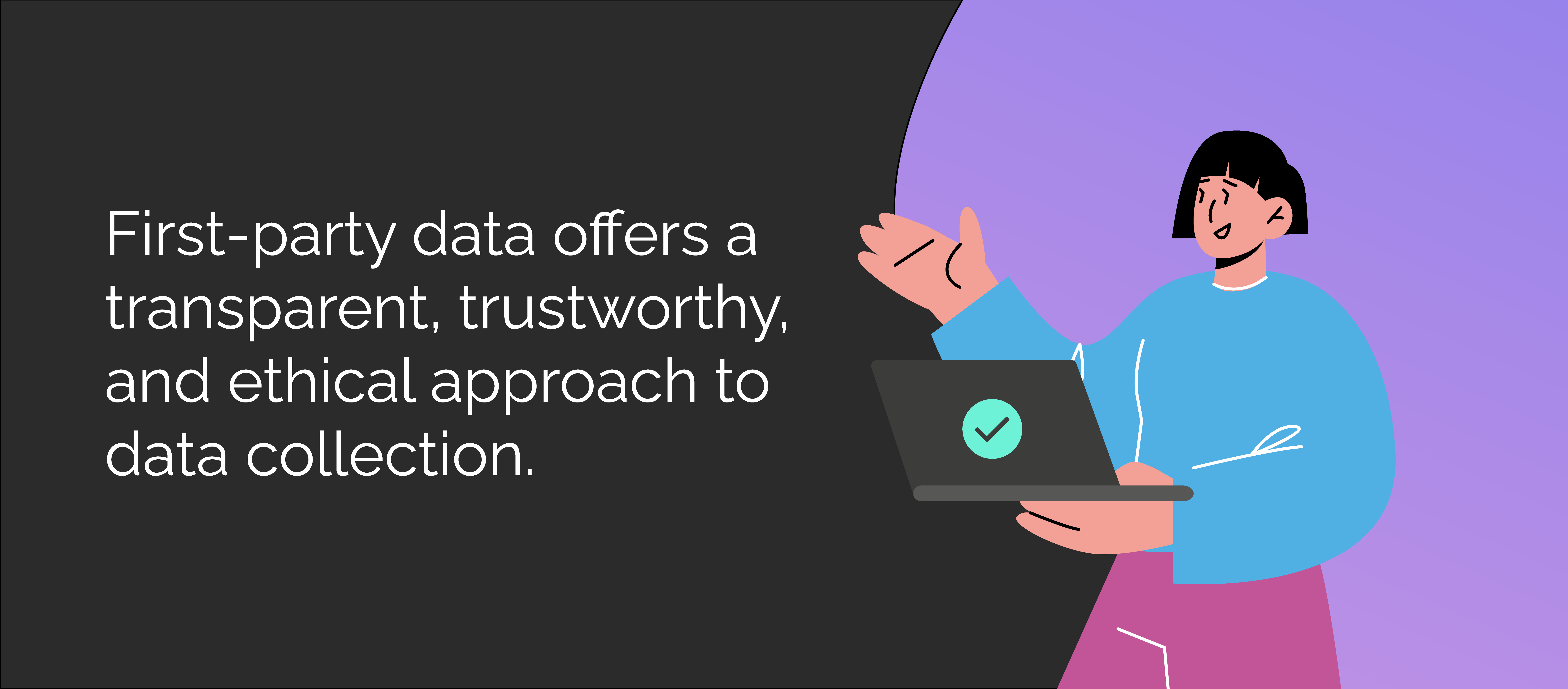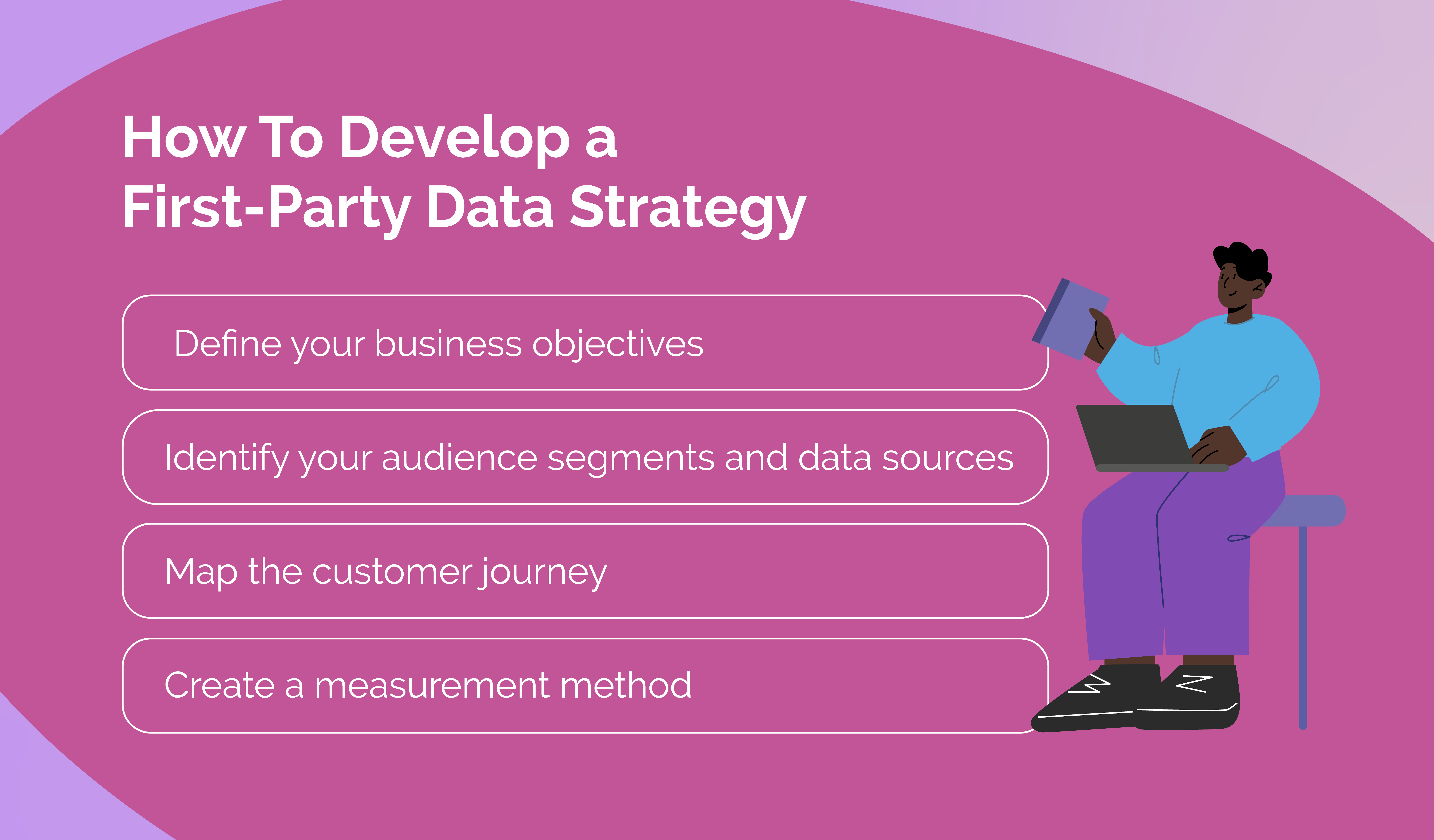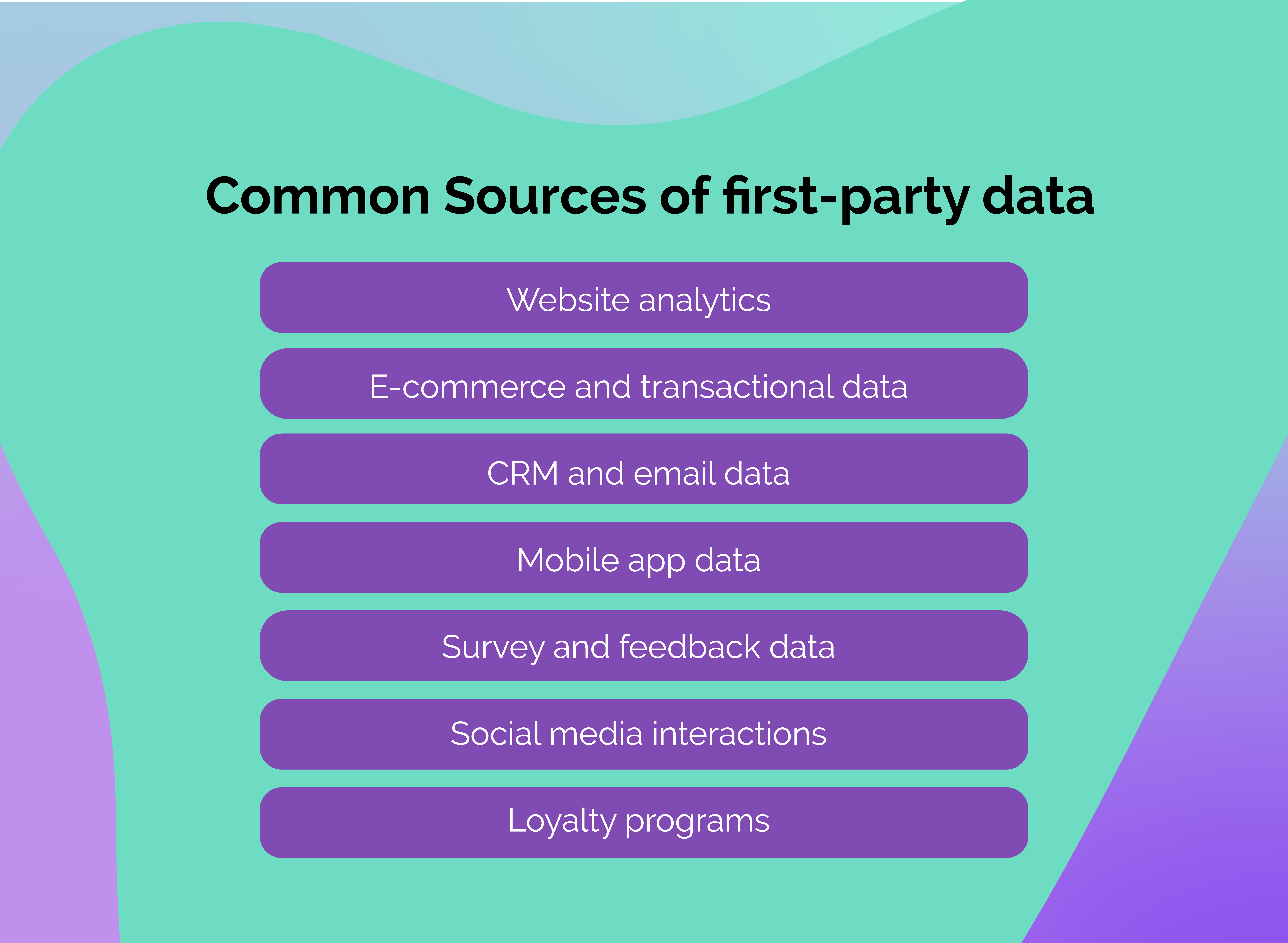“The cookieless world assumes that we’re getting rid of all cookies when that’s not entirely the case” — Patrick Douwsma, Strategic Account Director at Adobe. With Google, the world’s leading web browser, set to retire third-party cookies by 2024, there’s been a notable shift away from third-party data collection and cookie usage. However, this does not mean the end of tracking but rather the beginning of a robust and authentic first-party tracking system. But why is it imperative to bid farewell to third-party cookies, and how can you develop an effective first-party data strategy? Let’s find out.
Why You Need a First-Party Data Strategy
Before jumping into the world of first-party data and the “cookieless” world, it’s crucial to understand why the decline of third-party data is not necessarily bad. Third-party data, often reliant on cookies, has faced various challenges, including:
Privacy Concerns
In many cases, third-party data collection involves gathering information about individuals from multiple sources without their direct consent. This practice has raised significant privacy concerns, as users are often unaware of how their data is used or shared. For example, users might unknowingly have their browsing habits tracked and their data sold to advertisers without explicit permission.
Accuracy, Quality, and Context
Third-party data can be less accurate and reliable compared to first-party data. Since it’s sourced from various external providers, there’s a higher likelihood of errors, outdated information, or even false data. Moreover, third-party data sometimes lacks the necessary context for making informed decisions. Without a deep understanding of how the data was collected or its original purpose, using it can lead to misinterpretation or incorrect conclusions.
For instance, analyzing third-party data without context can result in misguided marketing strategies, as the data lacks insights into user behavior and preferences. All this can lead to wasted marketing budgets, and it’s likely to hurt user experience.
Data Security
Because third-party data is frequently obtained from outside sources, there is a risk of malicious or compromised data infiltrating organizational systems. As a result, organizations that rely on third-party data risk data breaches and security risks.
Consider this: a company may unknowingly incorporate compromised third-party data into its customer database, jeopardizing its users’ security and privacy.
Regulatory Compliance
With evolving data protection regulations such as GDPR and CCPA, using third-party data can pose compliance issues. Managing third-party data collection in a legal and ethical manner and ensuring that users have given proper consent can be complex, time-consuming, and costly.
Developing a First-Party Data Strategy
In contrast to third-party data, first-party data comprises information about a business’s audience gathered directly from its customers. In other words, when using first-party data, you don’t rely on insights from other companies or purchase data from external sources — you derive data directly from customers.

First-party data offers a transparent, trustworthy, and ethical approach to data collection. However, you need a robust first-party data strategy to succeed with this method. This strategy serves as a roadmap for collecting and using customer data to improve marketing performance and create better customer experiences.
Here are the key steps to developing such a strategy:

1. Define Your Business Objectives
While jumping straight into defining data sources and putting data collection methods in place seems like a logical first step, aligning your strategy with your business goals is crucial. This way, you can answer some critical questions: What role will first-party data play in achieving these broader goals? What objectives will first-party data collection address, and how will this be achieved?
You can use first-party data to enhance a business’s goals in several ways, including but not limited to:
- Retargeting website visitors on other platforms using their purchase history. For example, first-party data allows you to retarget people who are more likely to be interested in your products or services, and it also allows you to personalize your retargeting ads with messages relevant to the individual’s interests.
- Improving attribution efficiency. Attribution is the process of determining which marketing channels are most effective in driving conversions. With first-party data, you can track your customers’ journey across multiple channels and devices, which can help you identify the most effective channels for your business.
2. Identify Audience Segments and Data Sources
The next step is to identify your target audience. Who are you trying to reach with your marketing campaigns? When you know the target audience, you can start to collect data about them that is relevant to the business goals outlined in Step 1. For example, if you are a retailer, you might collect data about your customers’ purchase history, demographics, and interests.
Once you have collected first-party data, you can segment your audience based on their interests, demographics, and behavior. This will help you create more targeted and relevant marketing campaigns. Here are some of the common ways to collect first-party data and segment users:
Website Analytics
- Identify pages or products with the most visits, longest durations, and highest conversions.
- Determine which sources are driving traffic (e.g., organic search, social media, paid advertising).
- Study user flow to understand common paths users take on the website.
E-commerce and Transactional Data
- Analyze purchase histories to identify patterns and preferences.
- Segment customers based on purchase frequency, average order value, and types of products purchased.
CRM and Email Data
- Segment email subscribers based on the types of emails they open, the content they click on, and their interactions over time.
- Use CRM data to understand the lifespan and behavior of a customer, including their inquiries, purchase frequency, feedback, and any customer service interactions.
Mobile App Data
- Study user activity within a mobile app, such as most used features, in-app purchases, and frequency of usage.
- Segment users based on app behaviors and preferences.
Survey and Feedback Data
- Collect feedback directly from customers through surveys, feedback forms, or reviews.
- Segment an audience based on their satisfaction levels, needs, and pain points.
Social Media Interactions
- Analyze user engagement metrics, such as likes, shares, comments, and direct messages.
- Segment an audience based on the types of content they engage with or the topics they frequently discuss.
Loyalty Programs
- Understand the behavior of loyal customers, including their purchase patterns, feedback, and preferences.
- Segment users based on loyalty points, rewards redeemed, and types of offers they respond to.

When choosing data sources for audience segmentation, it’s important to consider the following factors:
- The types of data that are available to you
- The level of detail you need to segment your audience
- The cost and time involved in collecting and analyzing the data
3. Map the Customer ‘Ant-Trails’
After deciding on the data sources you will focus on, you need to map out the pathways, or ‘ant-trails’ that turn strangers on the internet into consenting customers. Start by creating a comprehensive customer journey map, outlining every purchase process stage. This blueprint will help you identify touchpoints to engage your audience and refine messaging and user experiences.
Understanding customers’ paths through the sales funnel is pivotal, as it helps refine the overall brand interaction and reduces barriers. This not only strengthens customer loyalty but also boosts conversion rates.
In mapping out the customer journey, it’s equally important to incorporate insights that shed light on customer behaviors and thoughts. This is how you make sense of your first-party data. These insights should cover elements like search terms customers use, web page visits, app installations, live chat conversations, automated email responses, and interactions on social media platforms.
4. Create a Measurement Method
As you work on the steps above, you should also be thinking about developing a measurement method for your strategy. This will help you track your progress and see how effective your first-party data strategy is.
Some specific things to consider when developing a measurement method include:
- Your goals: What do you want to achieve with your first-party data strategy? Once you know your goals, you can develop KPIs (key performance indicators) that will measure your success. For example, if your goal is to increase website traffic, you might track the number of visitors to your website each month.
- The data you will collect: The data you collect will depend on your goals and KPIs. For example, if you want to measure the effectiveness of your email marketing campaigns, you might collect data on email opens, clicks, and conversions.
- Data collection methods: There are many ways to collect data, such as website analytics, CRM software, and surveys. The method you choose will depend on your budget and resources.
- Data analysis methods: How will you analyze the data? Once you have collected the data, you need to analyze it to see how it’s performing. You can use data visualization tools to help you understand the data.
- How often you will measure results: You should measure your results regularly to see how your first-party data strategy is performing. This will help you make necessary adjustments to your strategy as needed.
The measurement method you choose to measure and how will differ depending on the goal you are targeting.
Forge Ahead With a First-Party Data Strategy
First-party data is at the core of a new era in digital advertising. Crafting a robust first-party data strategy is not an option; it’s a necessity. Need a helping hand with creating a winning first-party data strategy that provides valuable experiences to customers while maintaining trust and transparency? Grapeseed Media can help.
Our team of experts understands the intricacies of the marketing landscape and can guide you in developing a first-party data strategy that’s tailored to your unique goals. Contact the Grapeseed team, and let’s embark on a journey toward a first-party data-driven future that empowers your brand and delights your customers.






